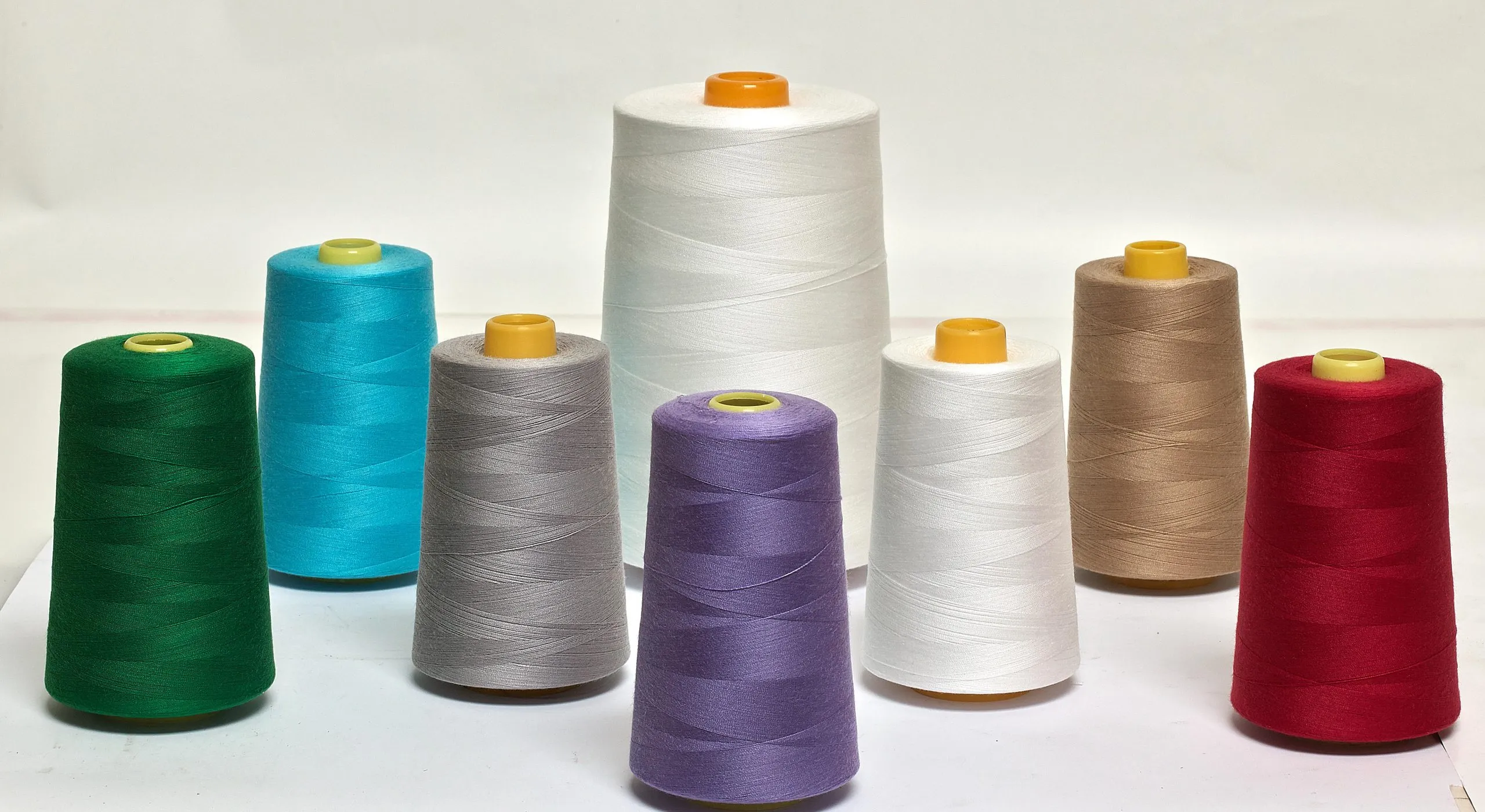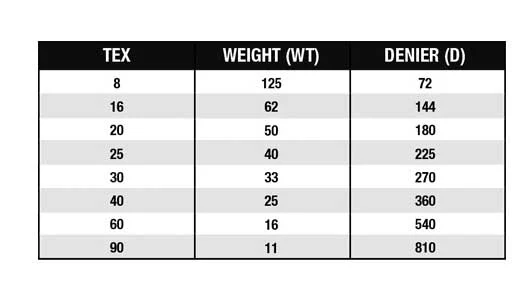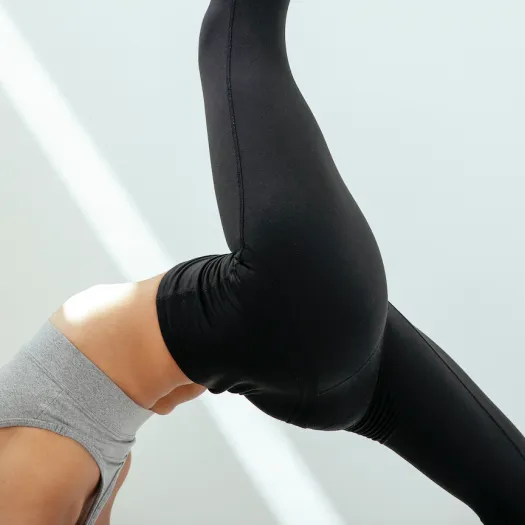
Elastane is one of the most important fibers in modern fashion because it brings comfort, flexibility, and shape-holding ability to clothes. Even when used in very small amounts, it transforms the way fabric behaves on the body. Today, elastane appears in everything from jeans to swimwear to sportswear, making it a core material in global apparel manufacturing.
What Is Elastane Fabric?
Elastane is a synthetic fiber created to provide extreme stretch and recovery. It was developed as a modern replacement for rubber in clothing, offering strength, comfort, and long-lasting elasticity. Although different regions use different names—such as spandex in the U.S. or Lycra as a brand—these all refer to the same fiber. Small amounts of elastane in a fabric blend can dramatically change the performance, fit, and feel of a garment.

Different names in different markets:
- Spandex – common in North America (an anagram of “expands”).
- Elastane – used in Europe and in many technical texts.
- Lycra – a famous brand name for elastane originally developed at DuPont.
In most fabrics, elastane is only a small percentage of the blend (often 1–10%), but that small amount gives a big stretch effect.
Properties of Elastane
| Property | Typical Behaviour / Description |
|---|---|
| Fiber type | Synthetic elastomeric fiber (polyether–polyurea copolymer, ≥85% polyurethane) |
| Stretch ratio | Can stretch about 5–6× its original length (500–600%) |
| Recovery | Very high; returns close to original length after release |
| Density / weight | Light; lighter than rubber for similar stretch performance |
| Strength | Good tensile strength for an elastic fiber; strong enough for repeated stretching |
| Comfort | Smooth, flexible, body-hugging feel; often used with cotton, polyester or nylon for softness |
| Heat resistance | Moderate; damaged by high ironing or dryer temperatures |
| Chemical resistance | Fair resistance to body oils and sweat; sensitive to strong chlorine and some oxidizing agents |
| Typical blend percentage | Usually 1–10% of fabric content; higher in compression or shapewear garments |
| Main end uses | Sportswear, swimwear, underwear, socks, leggings, stretch denim, shapewear, activewear |
| Biodegradability | Non-biodegradable; persistent in landfills and the environment |
| Recyclability | Hard to recycle in blends; can hinder mechanical recycling of mixed fabrics |
History of Elastane
The story of elastane began in the mid-20th century, during a period when scientists were searching for better alternatives to natural rubber. Rubber was heavy, degraded quickly, and limited garment comfort. Chemists at DuPont spent years experimenting with new polymers before discovering the formula that became elastane. This breakthrough changed the global textile industry and helped create an entirely new generation of stretch garments.
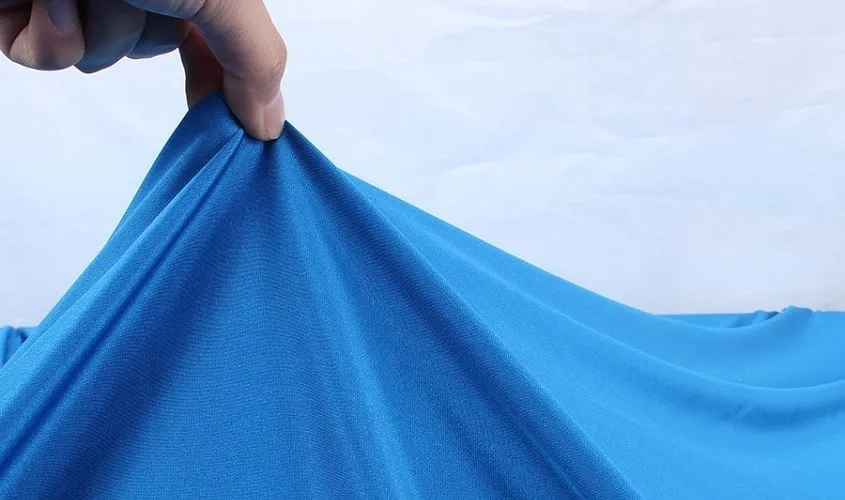
In 1958–1959, DuPont scientist Joseph C. Shivers perfected the first commercial elastane fiber. It launched under the brand name Lycra and was immediately adopted in underwear, lingerie, and swimwear because it was lighter, stronger, and more durable than rubber. Over the decades, elastane expanded into jeans, activewear, shapewear, hosiery, and even movie costumes. By the 2010s, elastane was present in most ready-to-wear garments worldwide, especially in markets like the U.S. and Europe.
How Elastane Is Made
Elastane is produced through highly controlled chemical processes that turn liquid polymers into flexible, stretchable fibers. Among all methods, solution dry spinning is the dominant technique because it creates consistent and high-quality elastic filaments. The process requires advanced machinery, strong safety standards, and precise chemical formulas. While complex, this manufacturing method is what gives elastane its excellent stretch and recovery. Comparing production methods:
| Dry (solution) spinning | High quality, scalable, requires solvent recovery systems; common for swimwear, activewear, denim blends. |
| Wet spinning | Lower speed, useful for specialty deniers or bespoke yarns; higher water/energy use and more handling steps. |
| Reaction / melt | Lower capital in theory but poor filament stability; rarely used for commercial elastane. |
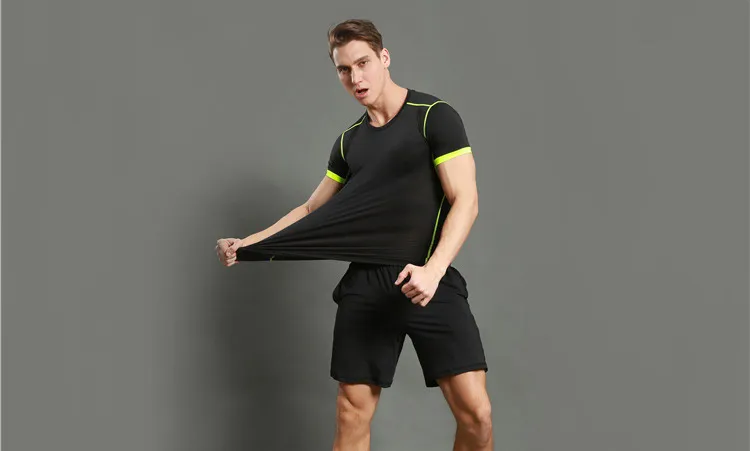
Begins with a reaction between a macroglycol and a diisocyanate to form a prepolymer. This prepolymer is then chain-extended with a diamine, building long molecular chains that form the elastane polymer. The polymer is dissolved in solvent and pushed through a spinneret into a heated chamber where the solvent evaporates. The hardened fibers are stretched, heat-set, coated with finishing agents like magnesium stearate, and finally wound into spools, ready to be blended with other fibers.
Basic chemistry:
- A prepolymer is made by reacting a macroglycol with a diisocyanate in roughly a 1:2 ratio.
- This prepolymer is then chain-extended with a diamine (a chemical with two amine groups).
- The result is a block copolymer (polyether–polyurea), which forms the elastane.
Spinning process:.
- The polymer is dissolved in a solvent to make a thick spinning solution.
- This solution is pushed through a spinneret, a metal plate with many tiny holes (like a showerhead).
- As the jets of solution enter a heated chamber with gas and solvent vapor, the solvent evaporates and the liquid strands become solid fibers.
- The fibers are stretched to align the molecules. This increases strength and elasticity.
- The fibers are coated with a finishing agent (for example magnesium stearate or silicone) so that they do not stick together and can run easily in spinning and weaving machines.
- Finally, the filaments are collected into yarns, which are knit or woven together with other fibers like cotton, polyester, or nylon.
Other older methods (wet spinning, reaction spinning, melt extrusion) exist but are now rare or obsolete because dry spinning is more efficient and gives better quality.
Pros & Cons of Elastane Fabric
Advantages:
Using elastane in a fabric blend brings several practical benefits:
- Excellent Stretch and Recovery: Elastane can stretch many times its original length and still bounce back. This makes clothes move naturally with the body. The fabric stays comfortable even during big movements. It also helps garments keep their shape longer.
- Improved Comfort and Fit: Just a small amount of elastane often 1 – 5% makes clothes feel softer and easier to wear. It helps garments fit different body shapes without feeling tight or stiff. This is why jeans, leggings, and activewear feel more flexible. The wearer gets a smoother, more natural fit.
- Shape Retention (No Bagging or Sagging): Elastane helps prevent knee, elbow, and waistband areas from stretching out. Clothes stay neat and keep their original form after hours of wear. This gives garments a “fresh look” for a longer time. It also reduces the need for frequent replacements.
- Lightweight but Strong: Even though elastane is very light, it is surprisingly strong. It handles repeated stretching without breaking or cracking. This makes it ideal for sportswear, underwear, and everyday fashion. The fiber keeps garments durable without adding weight.
Disadvantages:
- Not Biodegradable: Elastane is made from petroleum-based chemicals, so it does not break down in nature. Clothes with elastane can stay in landfills for many years. This becomes a big issue as the fashion industry grows. Even small percentages of elastane in fabric still create long-term waste.
- Hard to Recycle: Recycling fabrics that contain elastane is very difficult because elastane must be separated from other fibers. Even 5% elastane in a blend can block normal recycling systems. This makes circular fashion and fabric reuse challenging. Most recycling plants cannot process elastane blends today.
- Loses Stretch Over Time: Even with good care, elastane slowly loses its original bounce. Repeated stretch-and-release cycles cause the fiber to “tire out.” Waistbands, knee areas, and elbow areas may start to relax and not return fully to shape. This shortens the life of stretch garments.
- Can Trap Heat in Some Fabrics: While elastane itself is breathable in thin amounts, some high-stretch fabrics become warmer and less breathable. In tight synthetic sportswear, this may trap heat and sweat on the skin. Designers must balance stretch with airflow.
- Cost Is Higher Than Basic Synthetics: Elastane costs more to make than polyester, rayon, or acrylic. The blending process also adds cost during fabric production. This increases the final price of garments that contain elastane. For budget products, this can be a challenge.
The Common Blends and Uses
Elastane is rarely used on its own because it performs best when blended with other fibers. Even a small percentage can transform a fabric by adding elasticity, comfort, and shape retention. These qualities make elastane essential across many garment categories—from denim to sportswear. Manufacturers choose different blends depending on the final function of the product. Typical blends and end uses include:
- Cotton + Elastane: T-shirts, stretch denim jeans, casual knitwear, leggings, underwear. Feels soft and natural, but fits the body better and holds shape.
- Polyester + Elastane: Sports T-shirts, yoga pants, compression garments, swimwear, “rash guards”. Adds moisture management, quick dry, and high stretch.
- Nylon (Polyamide) + Elastane: Swimwear, lingerie, hosiery, performance sportswear. Smooth handfeel, high durability, and strong rebound.
- Wool or Viscose + Elastane: Stretch suiting, dresses, knitwear. More comfort and ease of movement in formal or office clothes.
- Other special uses: Socks often contain 2–10% elastane for grip and recovery. Medical and support garments (shapewear, compression sleeves, stockings) use higher elastane content. Motion-capture suits and costumes in film and gaming rely on super-stretch fabrics with high elastane content.

Cotton + elastane blends are common in T-shirts, stretch denim, leggings, and everyday clothing, giving soft comfort with gentle stretch. Polyester + elastane blends are widely used in activewear, yoga pants, rash guards, and compression garments because they combine flexibility with quick-dry performance. Nylon + elastane blends dominate swimwear, hosiery, and lingerie due to their smooth texture and durability. Elastane also appears in socks, medical compression garments, uniforms, and fitted fashion pieces.
Care & Maintenance Elastane Fabric
Taking care of elastane fabric helps keep its stretch strong and its shape looking new. Because elastane is sensitive to heat, chemicals, and sunlight, simple washing habits can make a big difference. With the right care, clothes with elastane will feel comfortable for a longer time and stay flexible without losing their bounce. These guidelines work for all types of elastane blends, including cotton, polyester, and nylon.
- Wash in Cool or Warm Water: Elastane fibers weaken when they are washed in hot water. Use cool or warm temperatures to protect the stretch. This prevents the fabric from aging too fast. It also helps the garment keep its shape.
- Use Mild Detergents: Strong detergents or bleach can damage elastane. Choose gentle, liquid detergents that wash clean without breaking the fibers. Avoid chlorine bleach completely. It can quickly reduce elasticity in swimwear and activewear.
- Avoid High Heat in Dryers: Drying on high heat can break down elastane and cause the garment to lose its rebound. Use low-heat tumble drying or air-dry when possible. This keeps the stretch healthier for a longer time.
- Iron on Low or Avoid Ironing: High ironing temperatures can burn or melt elastane fibers. If ironing is necessary, use a low setting and place a cloth on top of the garment. Many elastane fabrics do not need ironing because they resist wrinkles naturally.
- Rinse Swimwear After Use: Chlorine and saltwater can slowly weaken elastane in swimwear. Rinse your swimwear with fresh water right after swimming. This helps maintain stretch and prevents early fabric damage.
- Avoid Long Sun Exposure: Strong sunlight can fade colors and weaken elastane fibers. Dry garments in the shade rather than direct sun. This keeps the fabric stronger and the color more vibrant.
-
Don’t Wring or Twist the Fabric: Twisting stretch fabrics too hard after washing can damage the fibers. Gently squeeze out water instead. This protects the garment’s shape and elasticity.
Conclusion / Final Words
Elastane is a transformative fiber that reshaped modern fashion by adding stretch, flexibility, and comfort to clothing. From denim to swimwear to sportswear, its impact is seen across nearly every garment category. While it brings remarkable benefits, its environmental challenges highlight the need for mindful use, improved recycling, and responsible care. With thoughtful design and production, elastane can continue to support both performance and comfort in the apparel industry.
FAQs About Elastane Fabric (Spandex/Lycra)
In Short, What is elastane fabric and how does it differ from rubber?
Elastane (also called spandex or Lycra) is a synthetic polymer fiber engineered for high stretch and rapid recovery. Developed in the late 1950s as a modern replacement for natural rubber, elastane is lighter, more durable, and resists degradation that affected rubber. Unlike rubber, elastane blends easily with other fibers and imparts elasticity even at low percentages (commonly 1-10%), changing how fabric fits and moves on the body.
Why is elastane important in modern clothing?
Elastane delivers exceptional stretch and recovery, improving comfort, fit, and shape retention. Small additions (often 1-5%) make garments move with the wearer, reduce sagging at knees, elbows, and waistbands, and help maintain a neat appearance for longer. These benefits explain elastane’s widespread use across jeans, activewear, swimwear, lingerie, and everyday apparel.
How is elastane manufactured?
Elastane production typically uses solution dry spinning. A macroglycol reacts with a diisocyanate to form a prepolymer, which is chain-extended with a diamine to build long polymer chains. The polymer is dissolved in solvent, forced through a spinneret into a heated chamber where the solvent evaporates, then the solidified filaments are stretched, heat-set, coated with finish agents like magnesium stearate, and wound onto spools. Dry spinning yields consistent, high-quality elastic filaments; older methods such as wet spinning or melt extrusion are now rare.
In short, What are the main advantages and disadvantages of using elastane?
Advantages include outstanding stretch and recovery, improved comfort and fit, strong shape retention (reducing bagging and sagging), and high strength relative to weight-ideal for sportswear, underwear, and everyday garments. Disadvantages include sensitivity to heat, chlorine, strong chemicals, and UV exposure which can degrade elasticity; challenges in end-of-life recycling when blended with natural fibers; and microplastic shedding during washing.
Which fabric blends commonly contain elastane and what are their typical uses?
Elastane is most effective in blends. Common mixes: cotton + elastane for T‑shirts, stretch denim, and casual wear; polyester + elastane for activewear, yoga pants, and quick‑dry garments; nylon + elastane for swimwear, hosiery, and lingerie. Typical elastane content ranges from about 1% up to 10% depending on required stretch-most ready‑to‑wear uses sit in the 1-5% range.
How should elastane garments be cared for to maintain elasticity and appearance?
Wash on a gentle or cold cycle with mild detergent and avoid bleach and harsh chemicals. Do not wring or twist the fabric; gently squeeze out excess water. Air dry flat or tumble on low heat; avoid high-temperature drying and ironing. Limit prolonged sun exposure and avoid contact with chlorine when possible. These habits reduce fiber damage and extend garment life.

